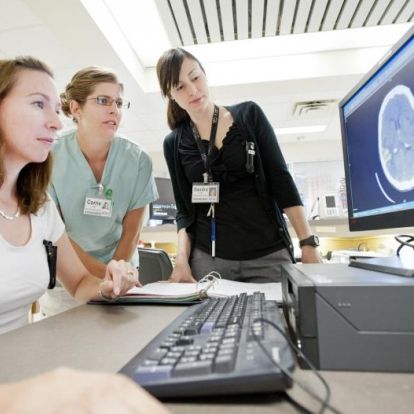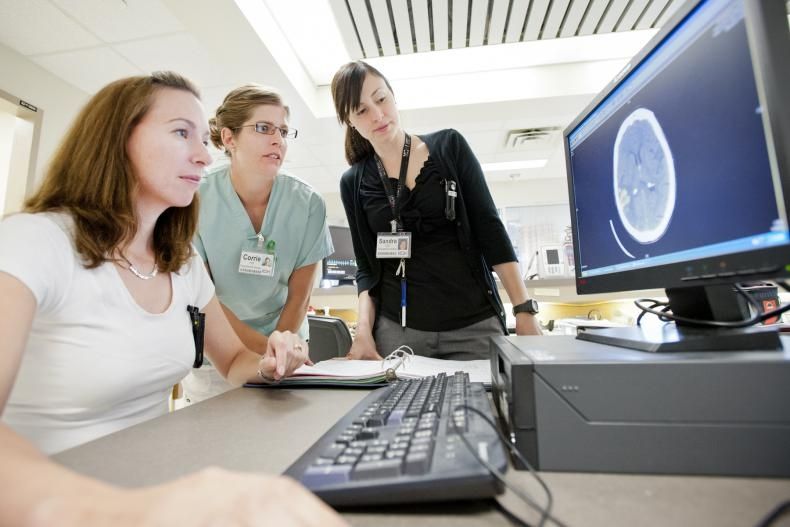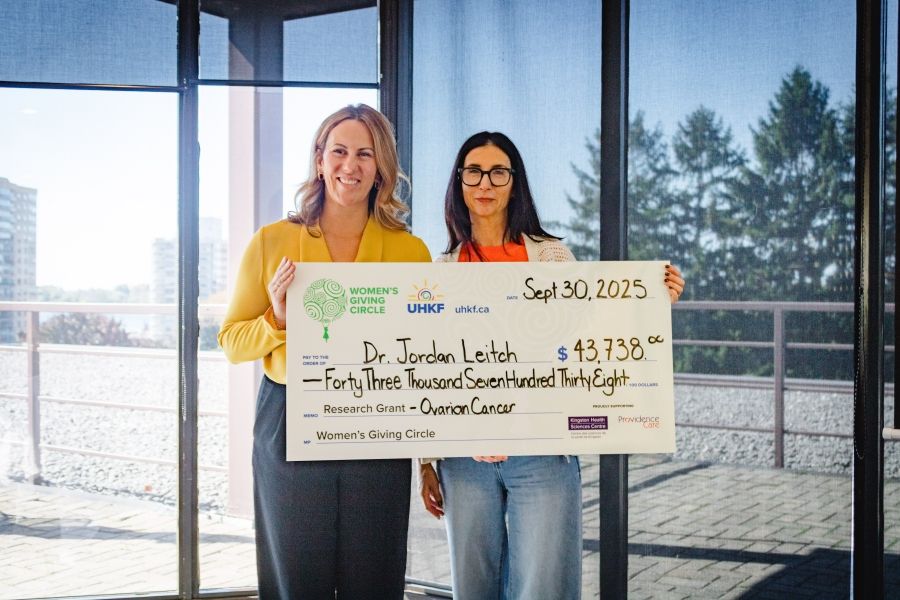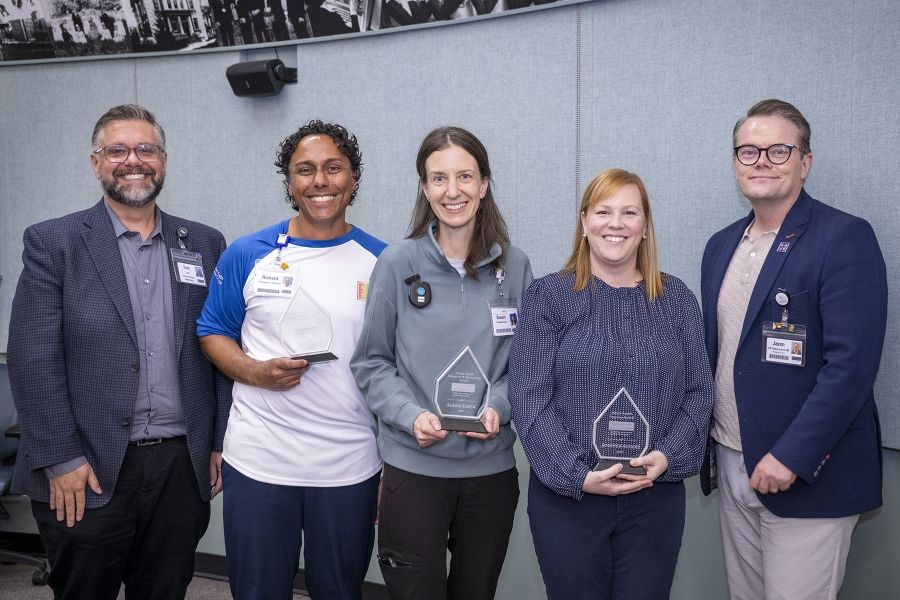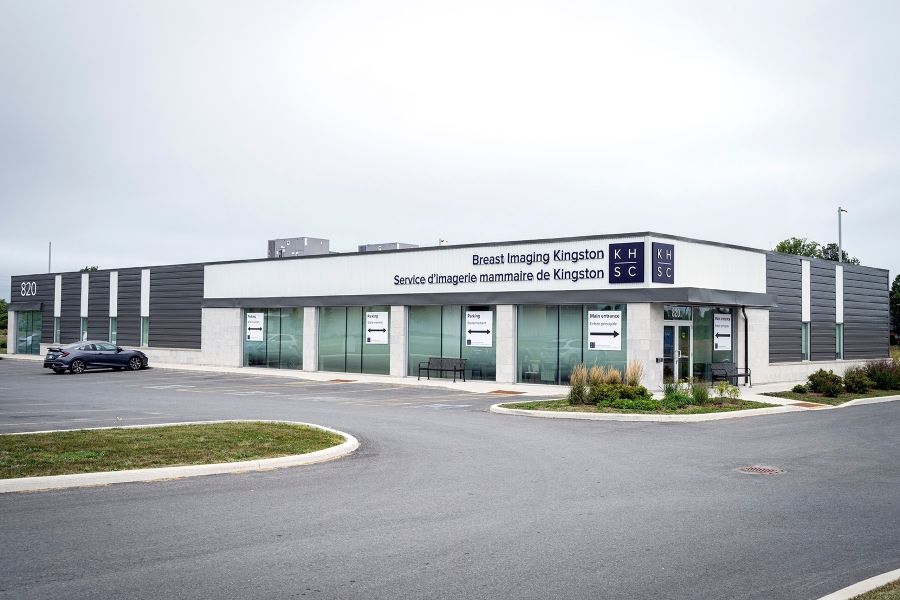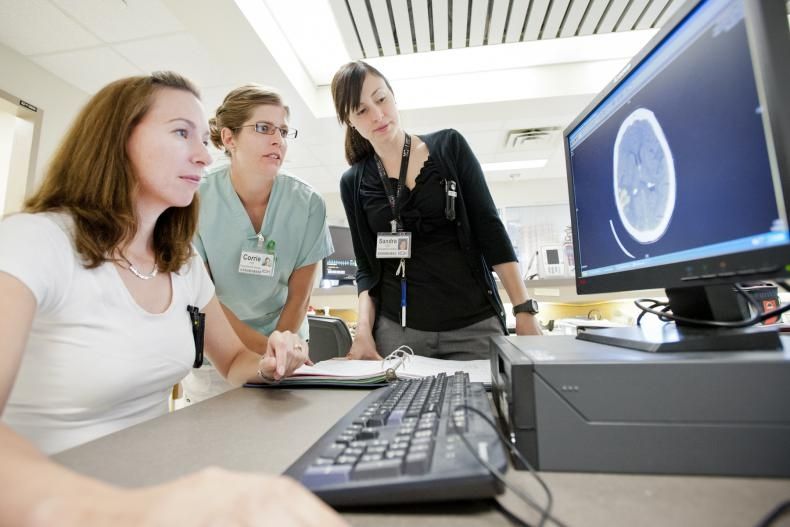
It's that time of year when the report cards are being sent out. And it's not just the kids who are getting their marks. This month, the Ontario Stroke Report Card arrived and there's an A-plus in there for Kingston General Hospital. We are the highest performer in the province on readmission rates.
For every 100 people who come into our hospital with a stroke or a mini-stroke, just 3.7 are readmitted within thirty days for any reason. The provincial benchmark rate is 8.0.
“You can look at the readmission rates as a bit of a measure of how the stroke care system is working as a whole,” says Cally Martin, Regional Director of the Stroke Network. “Our goal is to design a system that makes sure care is flowing seamlessly and patients are getting the right care, at the right time, in the right place.”
Martin says a big part of our success at KGH is the specialized stroke care provided in our emergency department, our critical care unit, our Stroke Prevention Clinic and on Kidd 7, in our acute stroke unit. Those admitted with a stroke move to Kidd 7 right away so that a team approach to their treatment can begin without delay.
“Strokes cause complex injury to the brain and you need an expert team to care for people recovering from them - that's what we have in place here at KGH,” says Martin. “There's no doubt this concentration of expertise is helping our patients have better recoveries.”
Along with highlighting KGH's success on readmission rates, the provincial stroke report card also looks at how we are doing across the region. Our regional readmission rate is also the lowest regional rate in the province. And there is plenty of other good news. People at risk of a stroke are now getting diagnostic imaging done faster. Our regional stroke program has also been doing some innovative work with the Community Care Access Centre (CCAC) around providing enhanced rehabilitation services for stroke patients on their return to the community.
“This project is showing that patients who receive timely enhanced rehabilitation also have lower readmission rates so we are further analyzing our data to learn more about what it can tell us,” says Martin.
But as on any report card, there are also opportunities for improvement. In this case, that's not a bad thing, says Martin. The scores on the card are allotted such that only the top performers in each category receive a green mark. Those below the 50th percentile are given red.
“The point of this report card is to drive excellence everywhere in our province. The high performer category allows us to see who is doing things really well so we can find out more about their practices and learn from them.”
Our Regional Stroke Steering Committee has flagged access to rehabilitation services as a top priority.
“Part of the reason we struggle moving people through the rehabilitation system is that a lot of us live in rural areas and have more difficulty accessing follow up care, so we need to create more options such as day rehabilitation and outpatient programs so we can move people out of hospitals,” says Martin.
Another best practice will be to create more acute stroke care units in the region – for example, in Belleville and potentially in Brockville.
“As KGH is showing with our exceptionally low readmission rate, this concentrated set up and the team work it fosters help us deliver outstanding care for our patients,” says Martin. “Even more collaboration between stroke prevention, acute care, rehabilitation and community services is going to make the difference to realizing our vision of Fewer strokes. Better outcomes.”
For more information, visit www.strokenetworkseo.ca.

